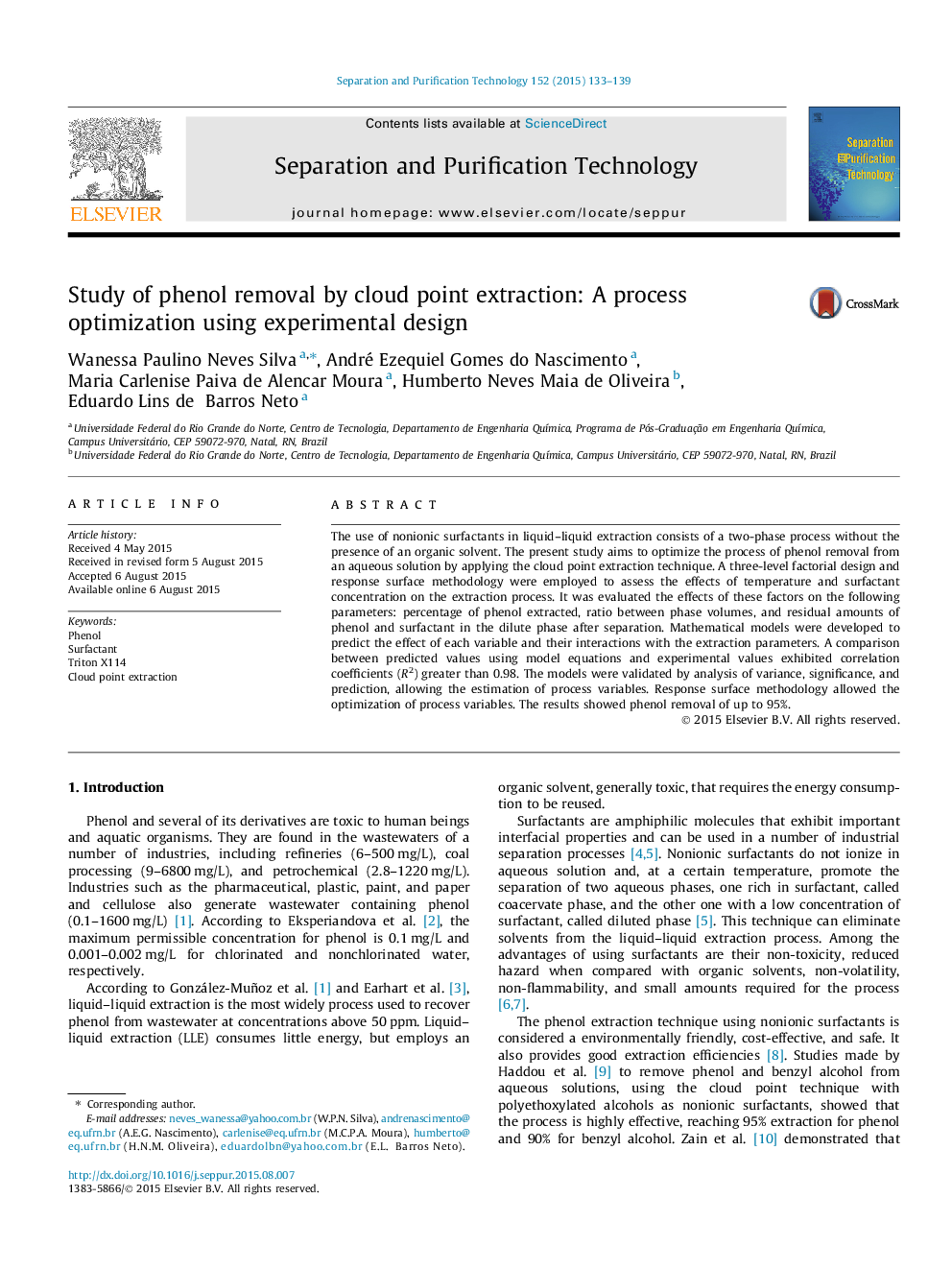| Article ID | Journal | Published Year | Pages | File Type |
|---|---|---|---|---|
| 640387 | Separation and Purification Technology | 2015 | 7 Pages |
•Cloud point extraction was used to remove phenol from an aqueous solution.•The effects of temperature and surfactant concentration were evaluated according a three-level factorial design.•Mathematical models were developed to predict the effect of each variable.•It was observed that temperature and surfactant concentration affect process efficiency.•The results showed a phenol removal efficiency of up to 95%.
The use of nonionic surfactants in liquid–liquid extraction consists of a two-phase process without the presence of an organic solvent. The present study aims to optimize the process of phenol removal from an aqueous solution by applying the cloud point extraction technique. A three-level factorial design and response surface methodology were employed to assess the effects of temperature and surfactant concentration on the extraction process. It was evaluated the effects of these factors on the following parameters: percentage of phenol extracted, ratio between phase volumes, and residual amounts of phenol and surfactant in the dilute phase after separation. Mathematical models were developed to predict the effect of each variable and their interactions with the extraction parameters. A comparison between predicted values using model equations and experimental values exhibited correlation coefficients (R2) greater than 0.98. The models were validated by analysis of variance, significance, and prediction, allowing the estimation of process variables. Response surface methodology allowed the optimization of process variables. The results showed phenol removal of up to 95%.
